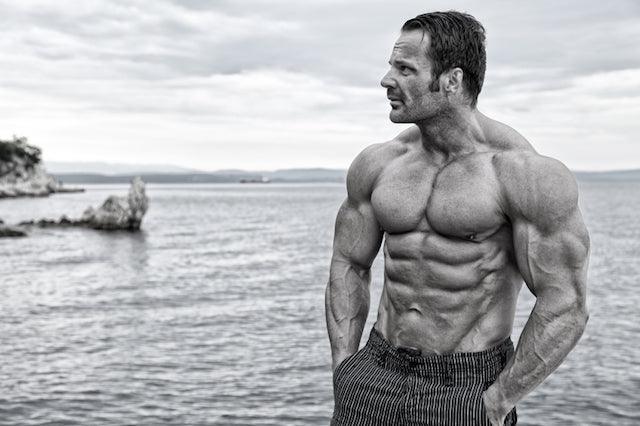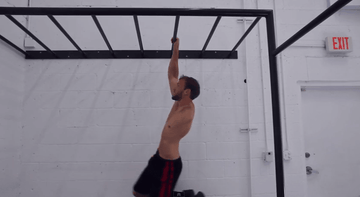

Five Tips to Get a Bigger Chest
Table of Contents
Bigger Chest we all want it so the following article will give you the latest information on building a bigger chest.
So get out your pencils and see if you’re a professor or a meathead when it comes to knowing chest training. It has been a while since your last true or false exam so get ready, In the animal kingdom, the ape beats its chest to show dominance and power. When it comes to the human body, nothing demonstrates strength and power like a muscular chest. No matter your body type however, you can indeed build a sculpted, powerful chest with a well-designed chest workout protocol.
True or False: Heavy Eccentric Exercise Increases Bench Press Strength: TRUE. Researchers examined the effects of additional eccentric loading on subsequent concentric strength. Eight subjects performed eccentric bench press with 105% of their concentric 1 repetition maximum (RM) and raise 100%. Basically, they used a special device that released the weights as it hit the ground on the eccentric portion of the lift. All 8 subjects who completed the study increased their 1RMs by 5 to 15 pounds, the use of additional eccentric loading significantly increased the weight that could be lifted on the subsequent concentric phase and therefore 1RM performance. Athletes who are interested in developing 1RM strength in the bench press may thus as the study at hand indicates benefit from the use of additional eccentric loading.
Doan, Brandon K., et al. “Effects of increased eccentric loading on bench press 1RM.” The Journal of Strength & Conditioning Research 16.1 (2002): 9-13.
True or False: Using a slightly Wider than Normal Grip on the Bench Press is Best: FALSE. Research has demonstrated a non-significant difference ±5% in one repetition maximum with a grip width of 100% and 200% biacromial width. Electromyographic results showed that grip width did not significantly affect activity of the sternocostal head of the pectorialis major. However, the narrow grip significantly increased the activity of the clavicular head and the activity of the triceps brachii compared to the wide grip. Therefore, this demonstrated that force is not dramatically reduced and neither is there a reduction in the contribution of the pectoral muscles when grip width is reduced.
Clemons, James M., and Chantelle Aaron. “Effect of Grip Width on the Myoelectric Activity of the Prime Movers in the Bench Press.” The Journal of Strength & Conditioning Research 11.2 (1997): 82-87.
True or False: Free Weights are Superior to Smith Machines for Muscle Activation: TRUE: Common wisdom has it that nothing compare to free weight training. The free weight bench press offers instability in all 3 planes of motion forcing the lifter to contract the muscles in a more natural fashion to balance in all 3 planes of motion while exerting force at a velocity that is not constant. This is important to the lifter who wants to increase maximal muscular strength of the prime movers while engaging the stabilizing effect of the prime movers and stabilizer muscles. The researchers wanted to compare the EMG activity of the pectoralis major, anterior deltoids, middle deltoids, triceps brachii and biceps brachii during the barbell and machine bench presses. Therefore, they recruited 5 male subjects who had been involved in resistance training for at least 3 times per week for the previous year. They measured the activity of the muscles while the subjects performed 5 trials with 80% of 1RM and 5 trials with 60% of 1RM. The researchers reported that the only muscles that displayed significant differences in EMG activity levels between exercises were the anterior and middle deltoids. These muscles displayed greater activity during the barbell bench press in comparison with the machine bench press. The EMG activity of the triceps brachii and pectoralis major trended towards being greater in the barbell bench press but the differences were not significant. The researchers concluded that the barbell bench press was superior to the machine bench press for developing the shoulder muscles. However, it appears similar in respect of the pectoralis major and triceps brachii.
Schick, Evan E., et al. “A comparison of muscle activation between a Smith machine and free weight bench press.” The Journal of Strength & Conditioning Research 24.3 (2010): 779-784.
True or False: Going to failure on the bench is Best for Building a Great Chest. TRUE. According to the results of a 2005 study, bench press training that leads to repetition failure induces greater strength gains than non-failure training in the bench press exercise for elite junior team sport athletes. Another study for example demonstrated that when a 6RM load is lifted repeatedly 6 times without resting between repetitions, the strength gains are significantly greater than when the same load is lifted an equal number of times with a 30-second interval between each lift to avoid fatigue. He suggested that when the athlete is fatigued, additional motor units are recruited in an attempt to continue the muscular activity, and this is thought to provide an additional stimulus for strength gains and hypertrophy.
Drinkwater, Eric J., et al. “Training leading to repetition failure enhances bench press strength gains in elite junior athletes.” The Journal of Strength & Conditioning Research 19.2 (2005): 382-388.
True or False: The Bench Press is Superior to the Pec Deck for Activating the Chest Muscle: FALSE. According to researchers, they were equivalent. Researchers set out to compare the EMG activity of the pectoralis major, anterior deltoid and triceps brachii in the barbell bench press and machine pec deck. They therefore recruited 13 trained male subjects. Then, in a separate testing session, they measured the EMG activity of each muscle, while the subjects performed a maximal effort with their 10RM for each lift. The researchers found that there was significantly more EMG activity in the triceps brachii during the bench press compared to the pec deck. There was no significant difference between exercises in respect of the EMG activity of either the pectoralis major and anterior deltoids. During the bench press, there was greater EMG activity of the pectoralis major than the triceps brachii. However, there were no differences in EMG activity between the pectoralis major and the anterior deltoids. During the pec deck, there was greater EMG activity of anterior deltoids and pectoralis major muscles in comparison with the triceps brachii. However, there was no difference in EMG activity between the pectoralis major and anterior deltoids.
The researchers concluded that the anterior deltoids and pectoralis major muscles are similarly involved in the pec deck and bench press. They therefore suggest that it is not accurate to describe the pec deck and bench press as primary exercises for the pectoralis major, but that these exercises should be seen as challenging the anterior deltoids and pectoralis major equally.
Valdinar de Araújo Rocha Júnio, Paulo Genti, Elke Oliveira and Jake do Carmo. Comparison among the EMG activity of the pectoralis major, anterior deltoidis and triceps brachii during the bench press and peck deck exercises. Rev Bras Med Esporte. Vol. 13, Nº 1 – Jan/Fev, 2007.
True or False: The Decline Bench Press is the Best Exercise to Build the Chest. FALSE: According to data from a 1995 study, it’s not. Six male weight trainers performed presses under four conditions of trunk inclination and two of hand spacing at 80% of their predetermined max. Surface EMG electrodes were placed over the five muscles in question. The subjects performed flat bench, incline, decline, and vertical or upright bench press exercise.
Here is what the researchers found:
Pectoralis major (sternocostal head) – muscle activation was highest in the order: upright bench press > incline > decline > flat bench press.
Pectoralis major (clavicular head) – muscle activation was highest in the order: incline > upright bench press > decline > flat bench.
Anterior deltoids – muscle activation was highest in the order: flat bench > incline > upright bench press > decline.
Triceps brachii – muscle activation was highest in the order: upright bench press > decline > flat bench > incline.
So to sum up the researchers findings, the researchers concluded that as the angle increases on the incline bench press, the more the deltoids take over.
The upright bench press is best for targeting the pectoralis major (sternocostal head). They concluded that the decline bench press is not superior for developing either head of the pectoralis major, so “decline is the best exercise for building a bigger chest” is a definite myth. The researchers concluded that a narrow grip during bench presses is best for developing the pectoralis major (sternocostal head) and triceps brachii. They concluded that the anterior deltoids are best developed using the vertical bench press.
Barnett, Chris; Kippers, Vaughan; Turner, Peter. Effects of Variations of the Bench Press Exercise on the EMG Activity of Five Shoulder Muscles, by Barnett, Kippers and Turner, in Journal of Strength and Conditioning Research. November 1995 – Volume 9 – Issue 4
SuppVersity EMG Series – Musculus Pectoralis Major: The …
https://suppversity.blogspot.com/ Wed, 06 Jul 2011 22:18:00 -0700
Notice the interpersonal variety in exercise effectiveness for the Butterfly Machine and the Dumbbell Bench Press. While the mean EMG activation was higher for the Butterfly, the average rank, indicative of how beneficial the …
September Research Roundup: Bench Press Edition – Bret …
https://bretcontreras.com/ Mon, 26 Aug 2013 09:41:34 -0700
The researchers wanted to investigate the correlations between relative loading and EMG activity of the prime movers during the bench press exercise. For this study, they recruited 11 healthy, young male subjects aged 22.8 …
Build Your Best Chest: 5 Must-Do Pec Exercises
https://www.infinitelabs.com/ Thu, 26 Sep 2013 16:22:49 -0700
Perhaps so, according to a recent study sponsored by the American Council on Exercise that investigated the EMG activity of nine common chest exercises.3 A team of researchers from the University of Wisconsin found that the bent-forward …

















